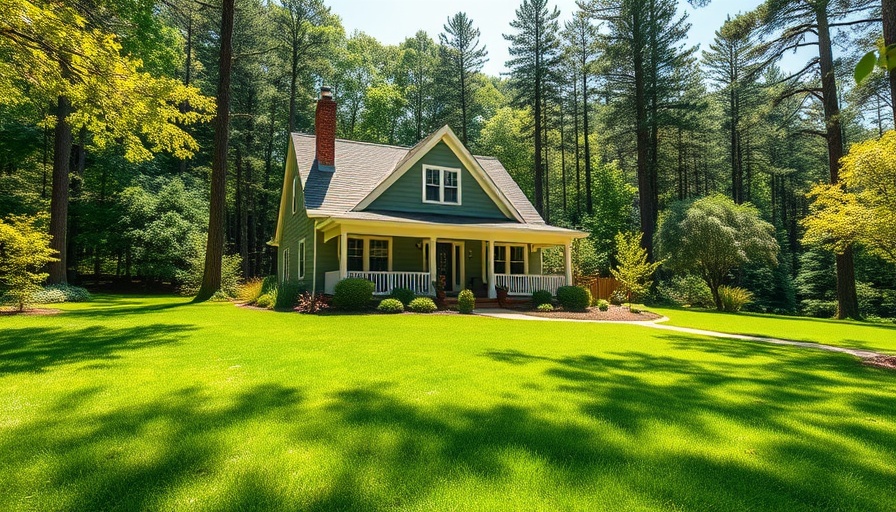
Achieving a Lush Lawn: A Sustainable Approach
Transforming your yard into an enviable space does not have to come at the expense of the environment. Homeowners across the country are recognizing the importance of balancing beauty with sustainability. As Jason McCausland from Weed Man notes, a healthy lawn not only enhances your home’s curb appeal but also contributes positively to air quality and soil preservation.
Fertilization: Less Can Be More
One of the primary tips from turf experts is to approach fertilization smartly. Instead of loading your lawn with excessive nutrients, focus on the timing and method. Fertilizing in the spring provides your grass with necessary nutrients to kick-start growth. However, experts warn against over-fertilization, which can disrupt your soil's pH balance, creating patchy and discolored grass. Instead, aim for moderate application during cooler hours when the grass is moist to prevent burning and ensure even growth.
The Benefits of Aeration and Overseeding
Aeration and overseeding are important techniques that can help your lawn flourish. Aeration reduces soil compaction, allowing water, oxygen, and nutrients to reach the roots more effectively. As Ryan Walts from Lawn Squad emphasizes, a commonly overlooked step is aerating compacted soils, which leads to healthier grass. By following this up with overseeding, you fill in bare spots and promote thicker growth, creating a natural barrier against weeds.
Smart Weed Control: Laying the Groundwork
Weed management should be proactive rather than reactive. Using pre-emergent herbicides before weeds sprout is a strategy recommended by McCausland. However, considering the environmental impact of certain chemicals, many professionals are advocating for organic solutions, such as corn gluten meal. Creating a thick, nutritious lawn through proper care is the best and longest-lasting defense against unwanted plants.
Height Matters: Mowing Guidelines
Another integral part of lawn care is mowing at the right height. Early mowing can lead to scalping—removing too much of the grass blade—and creates an uneven appearance, making your lawn vulnerable to diseases. The first mow should be done with the highest setting of the mower to encourage healthy regrowth. As a general rule, never cut more than one-third of the grass length during any mowing session.
Future Trends in Lawn Care
Looking to the future, homeowners are increasingly interested in sustainable landscaping practices that minimize water usage and chemical input. Experts predict a rise in the adoption of drought-resistant plant varieties and innovative turf alternatives that require less maintenance and contribute to a healthy ecosystem. This shift not only helps in conserving natural resources but also aligns with broader trends towards sustainable living.
Maximizing Home Value with Lawn Care
Investing in your lawn can significantly boost your home’s resale value. Well-maintained landscapes attract potential buyers and enhance your property’s visual appeal. Homeowners are encouraged to view lawn care as part of a larger renovation strategy, impacting both the enjoyment of their home and its market value.
With these insights from turf specialists, it's clear that achieving a stunning lawn is both an art and a science. By practicing sustainable lawn care, you not only make your yard the envy of the block but also take critical steps toward protecting the environment. Make these proactive changes today!
Call to Action: Ready to elevate your lawn care game? Start implementing these tips and take pride in making your yard both beautiful and eco-friendly!
 Add Row
Add Row  Add
Add 




Write A Comment